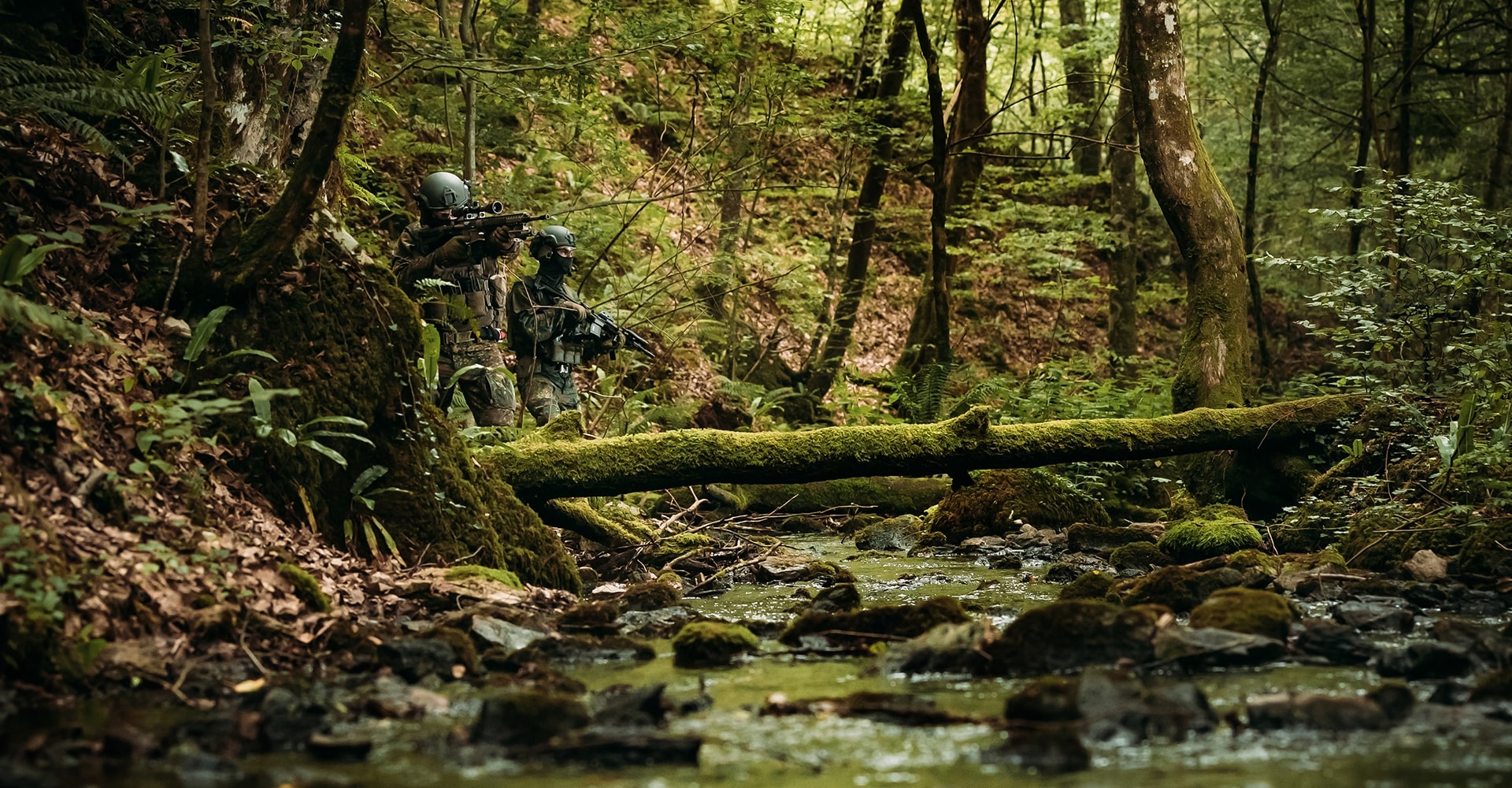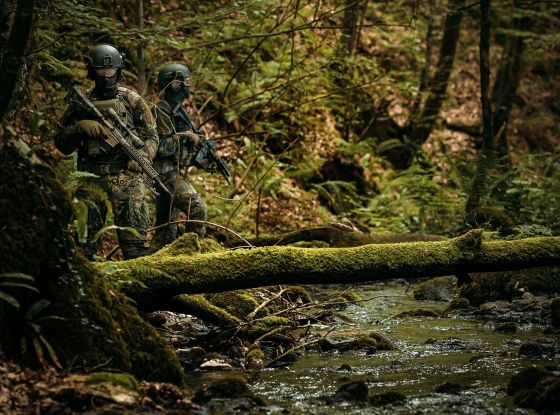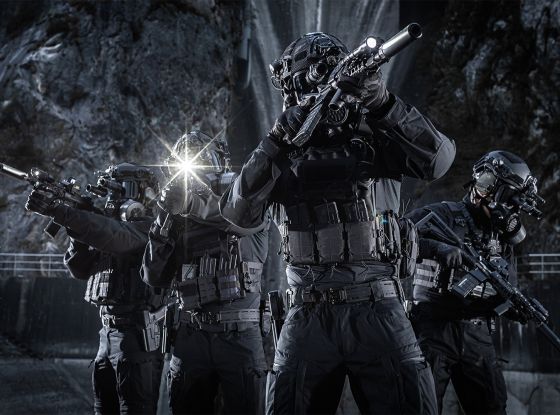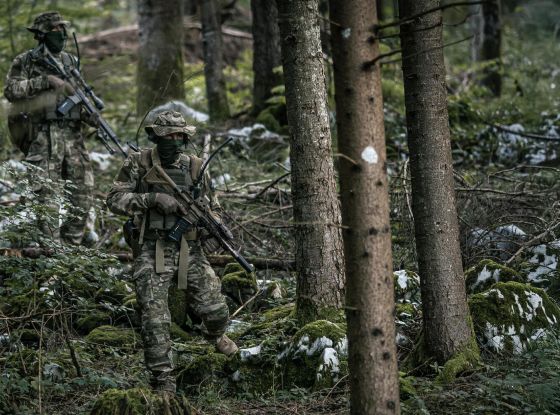Camouflage patterns have long played a quiet but critical role in tactical success. It’s not just about blending in — it’s about manipulating how observers see, process, and react to their environment. Over the decades, camouflage has evolved from hand-painted designs to digitally engineered, multispectral concealment systems. Each step forward reflects a deeper understanding of human perception, environmental demands, and technological threats.
In this blog post:
- Why We See What We See: The Science of Camouflage Patterns
- A Brief History of Camouflage Patterns
- Key Design Principles in Modern Camouflage Patterns
- Environmental Impact on Camouflage Pattern Design
- From Traditional to Digital: The Camouflage Pattern Revolution
- Looking Ahead: The Future of Camouflage Patterns
- Conclusion
In this blog, we explore the science behind camouflage patterns, trace their development through history, examine key design principles, and look ahead at where the future of concealment is headed.
Why We See What We See: The Science of Camouflage Patterns
To understand camouflage patterns, we first need to understand how detection works. Human vision is designed to recognize patterns, shapes, and contrast, especially when it comes to spotting the human figure. Camouflage must therefore disrupt the brain’s ability to identify those visual cues.
Detection is often triggered by shape, shadow, texture, colour, and movement. A clean silhouette or off-tone contrast can instantly draw the eye. Camouflage patterns work to counter these signals by breaking up outlines, diffusing light and shadow, and visually merging the body into the environment’s texture and tone.
This is where science meets function. The most effective camouflage patterns aren’t necessarily photorealistic — they’re engineered to interrupt perception. Macro elements distort outlines at a distance, while micro details reduce recognizability up close. When paired with terrain-specific colour palettes, camouflage becomes more than concealment — it becomes a tool for visual misdirection.
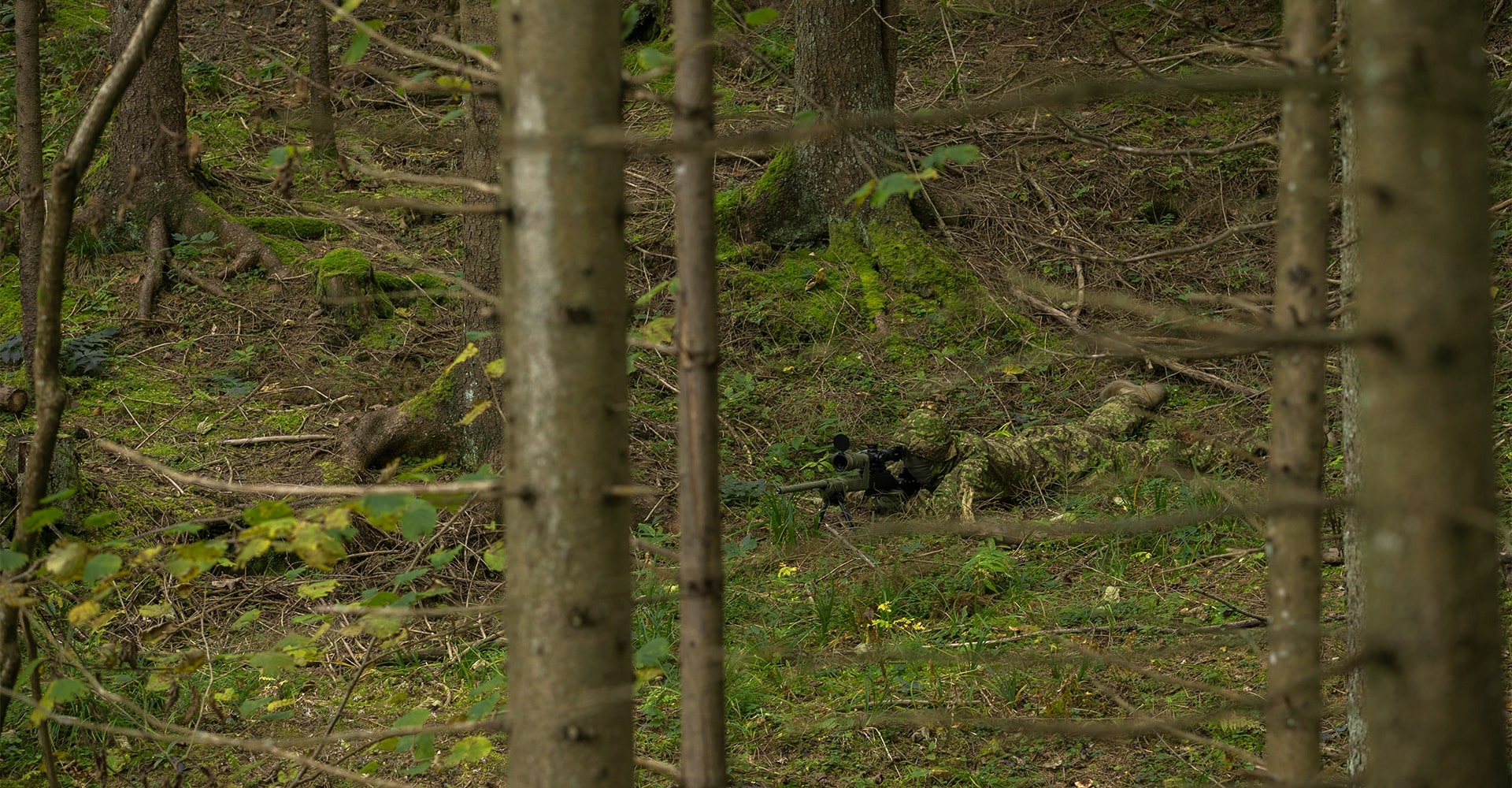
Want to understand why you get spotted and how to avoid it? Check out Why Things Are Seen: Mastering 7’s Tactical Concealment for practical rules that improve your ability to stay hidden.
SUBSCRIBE TO UNLOCK OUR EXCLUSIVE CONTENT
Enter your email and get timely updates and relevant intel on tactical topics directly to your inbox.
You are signing up to receive updates via e-mail from which you can opt out at any time. Visit our privacy policy for more info.
A Brief History of Camouflage Patterns
Camouflage as a dedicated discipline didn’t emerge until the 20th century, but the instinct to blend in has always been essential for survival. World War I introduced the need for concealment on a new scale, particularly in response to aerial reconnaissance. This led to the creation of camouflage units and the first official military camouflage patterns, from dazzle paint on ships to mottled fabrics for snipers.
World War II brought a leap forward. Countries like Germany, the Soviet Union, and the U.S. developed disruptive camouflage patterns for scouts, paratroopers, and special units. These designs laid the foundation for today’s standardized systems.
The Cold War era marked a more systematic approach. Camouflage patterns became tied to national identity — think British DPM, U.S. Woodland, or Soviet-era Flecktarn variants. As operations extended into jungles, deserts, and urban environments, new patterns were developed to match. By the late 1990s, it was clear that no single camouflage pattern could cover all missions, opening the door to multi-environmental systems and digital design.
For a deeper dive into how camouflage developed across the globe, see our Ultimate Guide to Camouflage Patterns or explore Europe’s Official Camouflage Patterns.
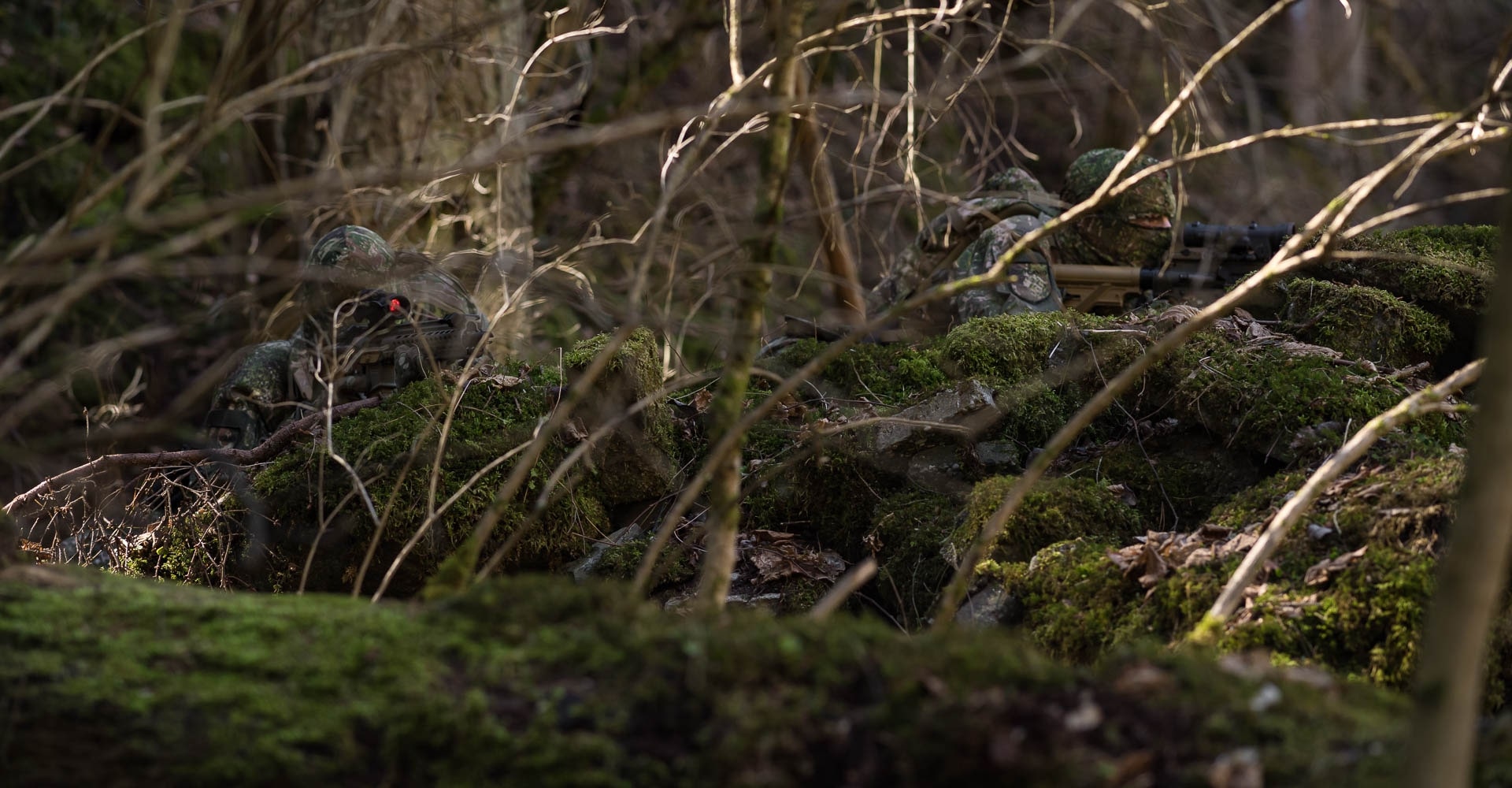
Key Design Principles in Modern Camouflage Patterns
Modern camouflage patterns are shaped by science, field observation, and real-world testing.
Several design principles guide their effectiveness:
- Disruptive Patterning: The goal isn’t to vanish, but to delay recognition. Patterns that break up familiar outlines, especially the human silhouette, help buy valuable time during movement or engagement.
- Multi-Scale Design: Effective camo works both up close and at range. Macro patterns obscure the overall shape from afar, while micro textures prevent recognition at close distances. When used together, they disrupt perception across all engagement zones.
- Color Adaptation: Color isn’t just about matching terrain, it’s about blending light and tone. The most effective palettes avoid sharp contrasts and replicate how natural colors shift under different lighting.
- Environmental Mimicry: Some designs are built to directly mimic the visual noise of a specific environment, such as the chaotic pattern of leaves in woodland or the soft gradients of desert rock.
Each of these factors is tested in harsh, unpredictable conditions — whether that’s rain, dust, brush, or under infrared surveillance.
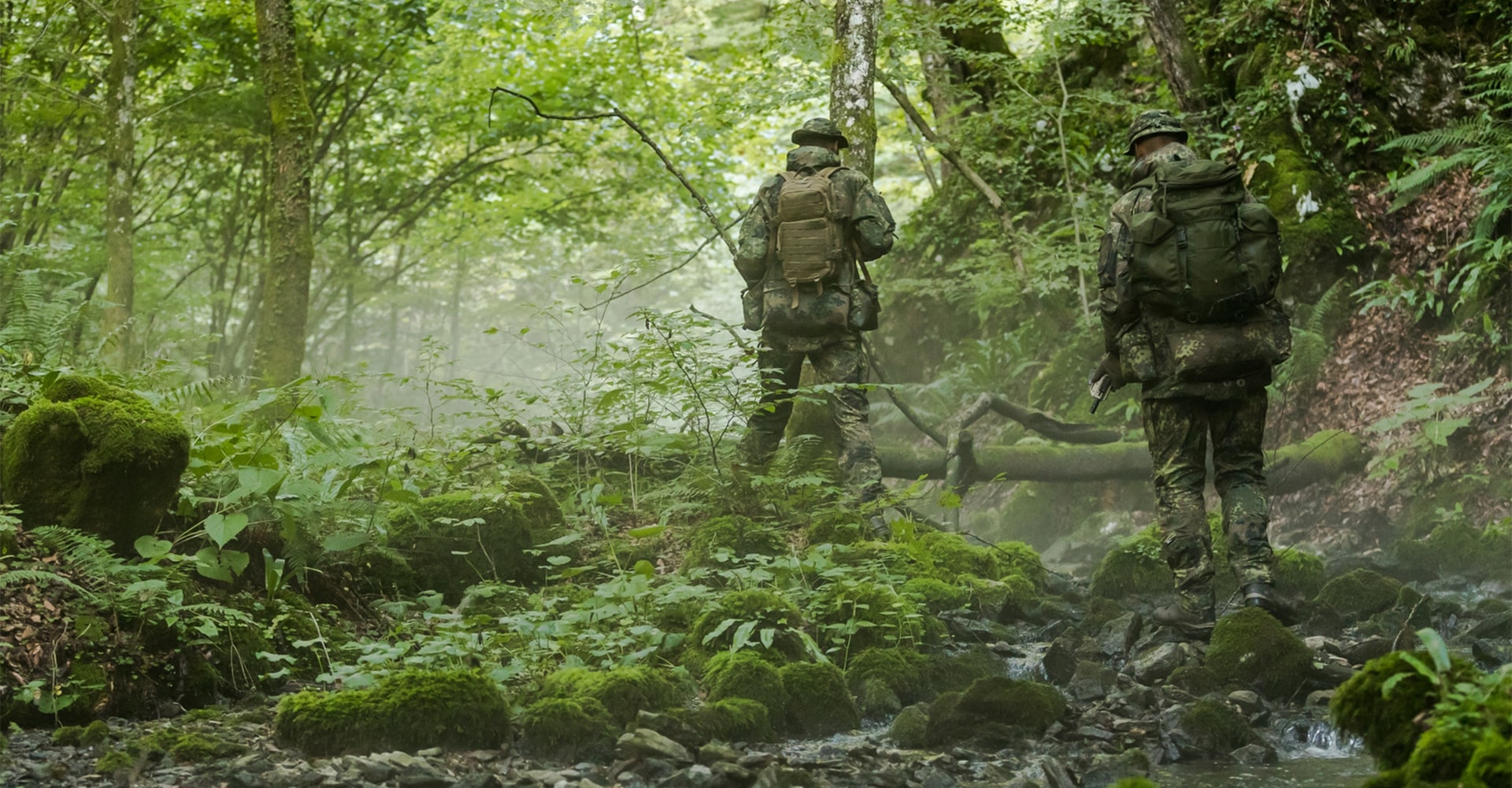
Environmental Impact on Camouflage Pattern Design
No two operational environments are the same. And neither are the camouflage patterns built for them. Terrain, vegetation, light, and seasonality all shape how patterns are developed and applied.
- Jungle environments require bold, layered patterns that mimic overlapping vegetation and dense shadows. Movement through complex terrain means visual disruption must remain effective in motion. Explore this further in Mastering Tropical Camouflage Patterns.
- Desert camouflage relies on muted colours, sand-faded gradients, and reduced contrast to blend into wide-open spaces and sun-bleached rock.
- Woodland patterns operate in dynamic lighting, where shifting shadows and canopy cover demand a blend of contrast and texture replication.
- Urban camouflage draws on grey tones and angular forms, built to blend into man-made surfaces, vertical structures, and architectural debris.
Designers must account for how colour, scale, and visual noise interact with a specific terrain — and how movement, light, and angle affect detection. Camouflage patterns are always terrain-driven, always evolving.
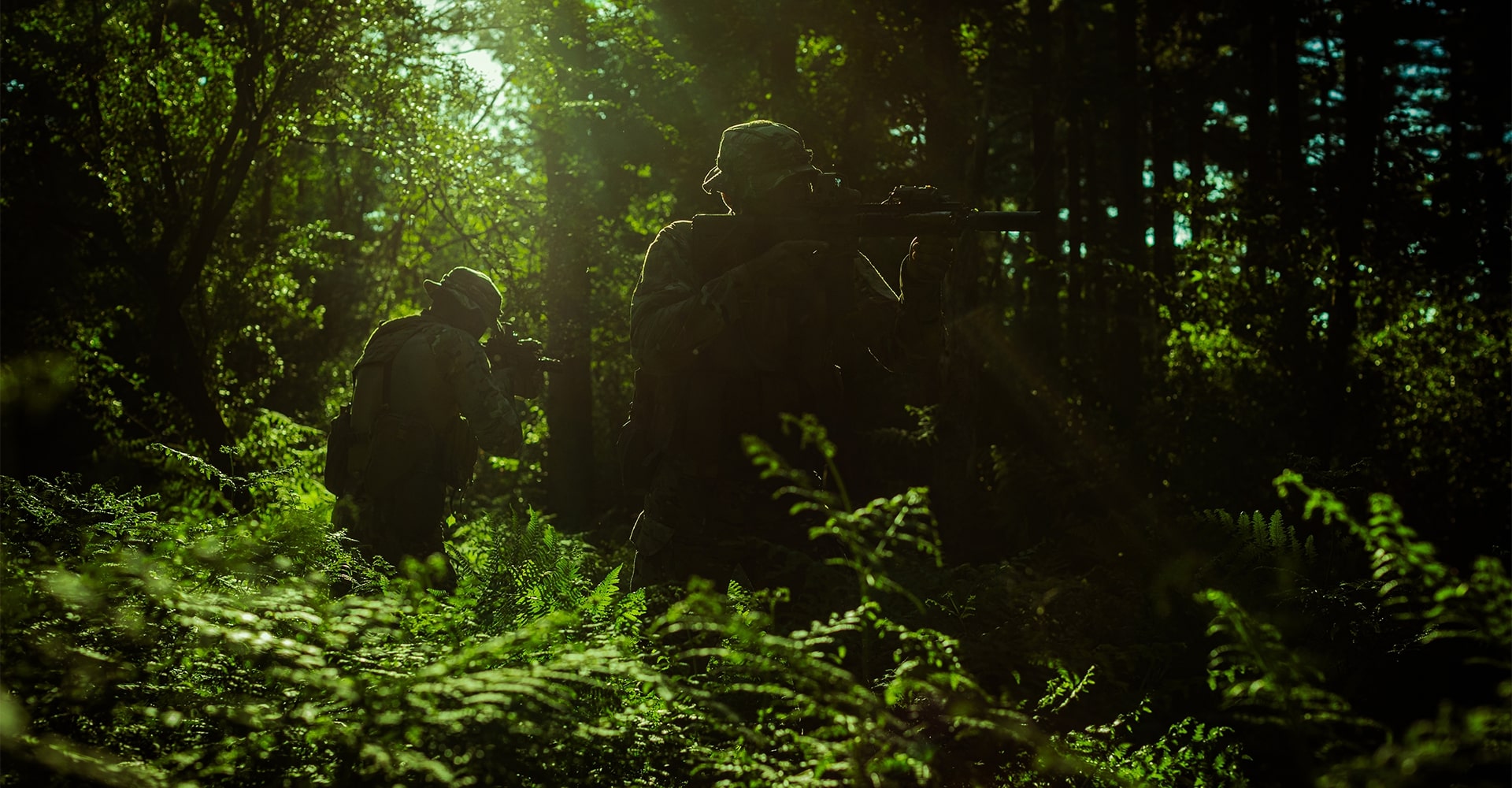
From Traditional to Digital: The Camouflage Pattern Revolution
One of the biggest turning points in the history of camouflage patterns was the move from traditional brushstroke designs to digital ones. This shift wasn’t just about aesthetics — it was about performance.
Digital camouflage, often referred to as pixelated camo, uses computer-generated fractal patterns to better simulate nature’s randomness. These high-frequency patterns blur edges, distort depth, and reduce silhouette recognition at multiple distances.
However, digital doesn’t automatically mean superior. In some cases — such as specific woodland terrains — traditional patterns can outperform. Digital design’s true strength lies in its adaptability: colours, scales, and contrast can be rapidly fine-tuned for specific missions, seasons, or operational zones.
A prime example is MultiCam, developed for performance across diverse environments. For insights into its variants and real-world capability, see What Are the Different MultiCam Versions? and How Effective is MultiCam in Different Environments?.
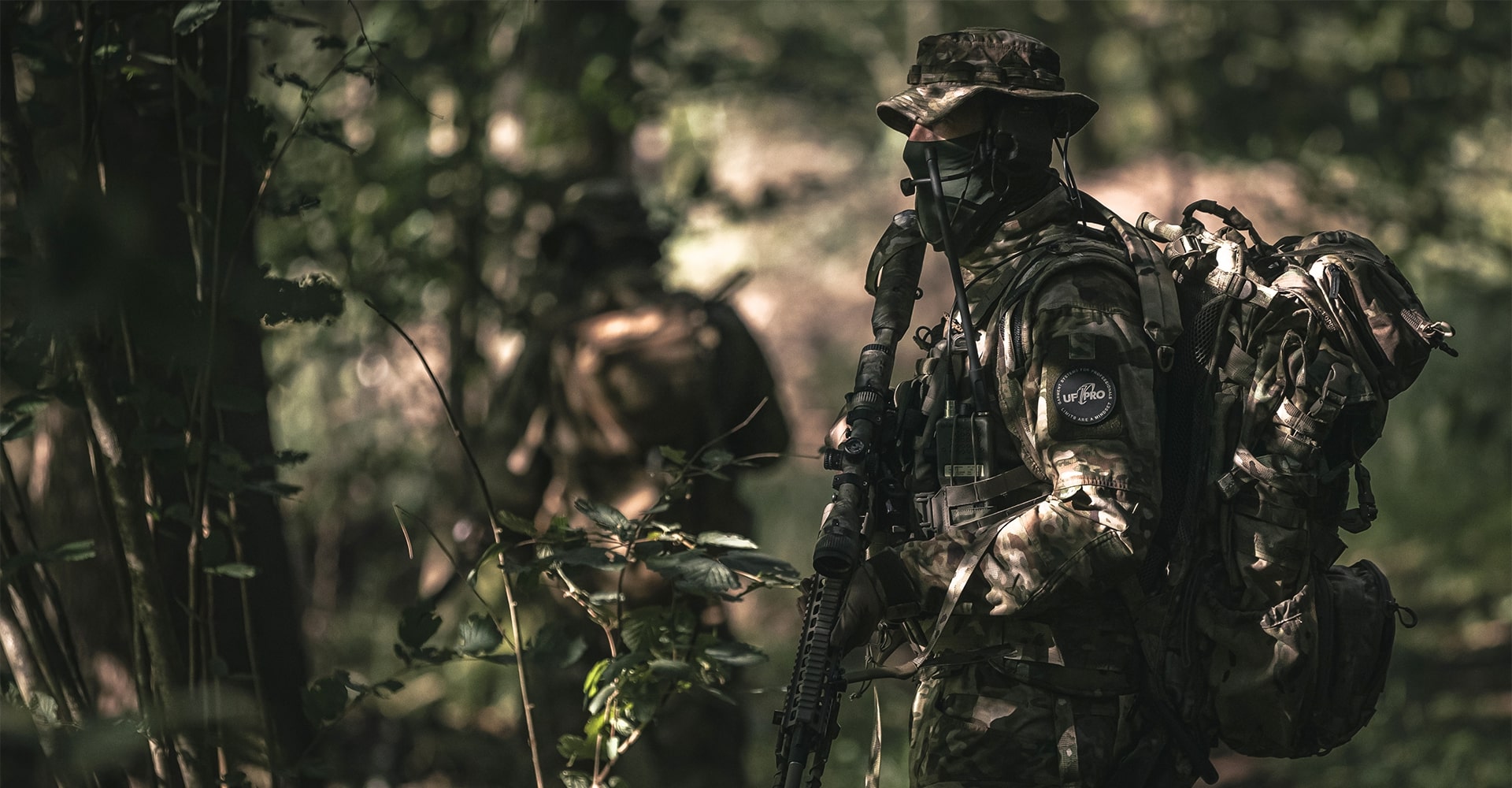
Looking Ahead: The Future of Camouflage Patterns
Camouflage is no longer just about what the human eye sees. The next generation of camouflage patterns goes beyond visible concealment, incorporating multispectral suppression, reactive fabrics, and smart materials.
Emerging innovations include:
- Adaptive camouflage, where textiles change colour, pattern, or texture in real time to match the surrounding environment. Inspired by biological systems like the skin of cephalopods, this technology could one day allow operators to shift visual appearance on the move, reducing the need for terrain-specific uniforms.
- Thermal and IR suppression, which uses advanced coatings, insulation layers, and signature-dampening materials to obscure body heat and reduce visibility to drones, surveillance sensors, and night-vision optics. These systems aim to neutralize detection across infrared spectrums, which are increasingly used in both conventional and asymmetrical warfare.
- Smart fabrics, which can embed sensors, power systems, and communication modules directly into the garment. These materials can monitor body temperature, environmental conditions, or transmit data, effectively turning your camouflage into part of the tactical network.
For a glimpse into unconventional approaches, explore CONCAMO: The Confusion Camouflage or trace the evolution of Flecktarn.
Conclusion
Camouflage is an important part of staying protected, but it’s only one element of a broader approach. Gaining a tactical advantage requires understanding how visibility works across different environments, light spectrums, and engagement distances. It also means using gear designed to adapt and applying strategies that anticipate detection. In today’s operational landscape, staying concealed is essential, and it starts well before being noticed.

